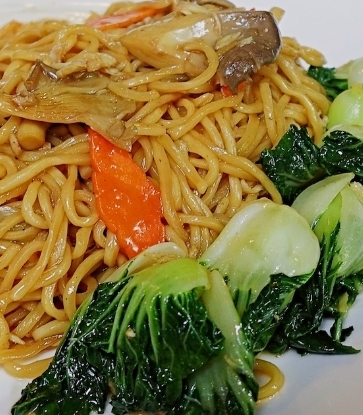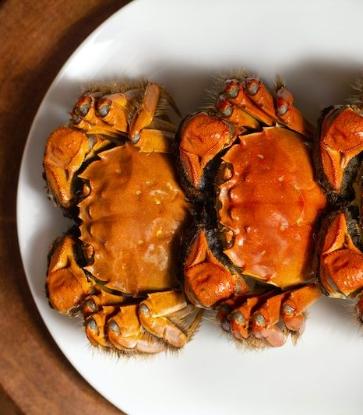Pork caul fat is the fatty membrane between a pig’s stomach and diaphragm. Decades ago, this webbed piece of fat was used frequently in the kitchen to elevate numerous dishes. But as people began eating more healthily, animal fats became regarded as the No. 1 enemy of cholesterol-fearing diners. Caul fat faced the same destiny and was relegated to the list of undesirables.

Popular Commodity Of Yesteryear
“Caul fat carries the fragrance of fat and pork meat. Its flavour is richer than simply lard or pork,” according to Leung Fai Hung, the executive Chinese chef of InterContinental Grand Stanford Hong Kong. When he entered the business some 40 years ago, caul fat was used for deep-fried dishes all the time. That loose and crispy mouthfeel and fatty aroma were a big draw for diners. “Nowadays, chefs rarely cook with it. For one, people freak out just hearing the word ‘fat’; other than that, they don’t know how to prepare it. Therefore, you hardly see pork caul fat in the kitchen anymore.”
The low demand from chefs and the home cook’s lack of knowledge in treating the caul fat mean it’s no longer readily available. You need to order it from the butcher a day or two in advance. Cleaning the lacy caul fat is the most troublesome step. Weighing at two to three taels (76g to 113g), it is full of impurities, blood and gravel. To recover its original white colour, it has to be rinsed under warm water, all the while jiggling it to keep the net open. The same process needs to be done at least three times.
“After rinsing, you can marinate it in Chinese rose wine or shuang jin jiu for 15 minutes to get rid of the unpleasant smell. And then you can cook with it straightaway if you want to keep that taste of the liquor in the dish. Otherwise, soak and clean it in warm water to take some of the liquor off the caul fat.”

Shining Star In Deep-fried Dishes And Stews
This peculiar web is most suited for deep-frying and stewing. “Pork caul fat is usually used like a skin to wrap the ingredients inside. The fat functions like a protective layer to prevent the loss of moisture, so the food comes out more tender. This fatty skin also gives the dish a smooth texture and taste of pork,” Leung explained.
Crispy pork kidney and liver roll showcases the magic trick of the caul fat. Leung takes the prepared caul fat to envelope stir-fried slices of cloud ear fungus, bamboo shoot, pork liver and pork kidney. “While rolling ingredients inside the caul fat, you have to thoroughly remove the air in between before applying cornstarch on the surface and deep-frying. This helps the skin adhere to the food. If there’s air inside the roll, the skin wouldn’t be as tight and it wouldn’t be as crunchy,” he said.
The chef goes the extra mile to rub a little sesame oil onto the roll before coating it with corn starch. The rich scent of sesame oil helps to eliminate any residual unpleasant smell of the pork caul fat. If used in stews, the fat is most often used to wrap thicker pieces of fish, which would then be deep-fried and simmered in the stew pot.

Fat Equals Smoothness
Stewed giant eel is another classic Cantonese dish with pork caul fat as a wrapper. Given its size, it takes a long time for the giant eel to cook, but lengthy stewing would toughen its texture. In the past, chefs liked to wrap the eel with pork lace fat, which keeps the eel skin smooth and its meat tender despite the extensive cooking on the stove.
“Another advantage is that it doesn’t block the sauce from penetrating the eel. After so much stewing, the meat still carries its original flavour with the addition of the sauce it absorbs. The aroma of lard on the exterior also makes the dish more charming,” Leung noted.
For home cooks who want to experiment with the fatty web, Leung recommends making deep-fried meat patty. The process is relatively less demanding: simply stuff the meat patty ingredients inside the pork lace fat and deep-fry. The scent of lard certainly takes the flavour of the dish up a notch.
“On the other hand, steaming makes the patty excessively greasy and affects the taste.” It might be too fatty for some people’s liking, but Leung emphasises that it’s the kind of fat that really smoothens and seasons the food. That special fragrance is hard to describe and worth shutting down your health-conscious brain for just a moment.






















